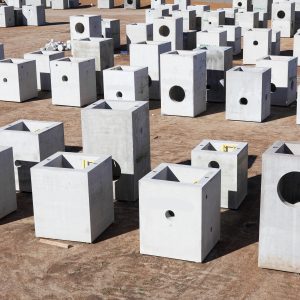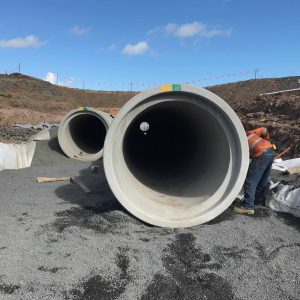




You get what you pay for
Precast is no exception. Sadly too often, builders and head-contractors get badly burnt when they select the cheapest precast price.
Almost ALWAYS, the cheapest tender will end up costing a WHOLE lot more in the end. Using precasters who don’t manufacture in accordance with Australian Standards and codes often results in the delivery of poor quality product, unrealistic promises, production and delivery delays or safety breaches. These can all result in cost blow-outs, protracted disputes and VERY real programme delays.
In most cases, these costs FAR outweigh the alternative value-for-money tender pricing which has been submitted by a reputable precaster.
Expect to pay bottom dollar and something will give. It WILL cost you in the end.
Due diligence on the precaster is CRITICAL
Just because a precaster has been around for 10 years does not mean they haven’t been riddled with quality disputes, delayed production or had a history of safety incidents.
Absolutely there are plenty of good precasters out there. But how do you know? And do you have the time and expertise to check?
There are a LOT of considerations, here are just a few…
- A precaster might be ISO certified but they may not implement procedures on a day-to-day basis, and the ISO audit may not have been conducted by someone who intimately knows precast;
- A precaster may have little repeat business and disputes may be commonplace;
- The precaster may cut corners during manufacture, delivery and installation;
- Shop drawings may be inadequate or not properly authorised;
- Hold points may not address the most important stages during manufacture;
- A precaster may not have a thorough understanding of – and may not comply with – Australian Standards, codes and legislative requirements;
- Testing and equipment maintenance and callibration may not be adequate.
Carrying out proper due diligence is extremely resource-intensive. The process of auditing a precast manufacturer should be complex and detailed, calling for checks that the business is sound and that the required processes and procedures are not only in place, but are actually being implemented on a daily basis.
Or let us do that checking for you… Our Master Precaster members are audited!
They are audited BY US and if they don’t pass the audit, they are not admitted to Master Precaster membership. You have our word on that!
When a precaster applies for membership with National Precast, their years of manufacturing experience initially dictate the category of membership for which they can apply.
If it’s under 2 years, they’ll apply for Provisional Precaster. If between 2 and 5, Precaster level, and only if they have 5 or more years of manufacturing experience, can they apply to become Master Precaster.
But they also have to pass the audit and commit to follow the National Precast Master Precaster Code of Conduct.
If an applicant does not pass the Master Precaster audit, they will be admitted as a Precaster member until such time that they submit to follow-up checks and provide evidence of the required information, to ensure Master Precaster membership requirements are met.
Importantly, the Master Precaster audit is:
- specific to precast manufacturing;
- a check as to whether the precaster operates in accordance with industry best practice; and
- conducted by an auditor who understands precast manufacturing.
SIX phases of audit
The audit process is comprehensive and comprises six phases:
- Documentation collection;
- Documentation assessment;
- Face-to-face audit (or video if needed);
- Audit assessment;
- Master Precaster membership recommendation and Board approval; and
- Improvement Report issued.
What is audited?
The Master Precaster audit involves the checking of systems, documentation, and most importantly, implementation.
In particular, the following areas are audited:
- The precaster’s TRACK RECORD
- Past and current clients
- Past and current projects
- Company history and growth
- The precaster’s CONTRIBUTION to their industry
- Industry association memberships, including their involvement in working groups, presentations and submissions
- Representation on behalf of the industry on Australian Standards committees
- Initiatives and liaison with government authorities, such as safety and roads’ authorities
- Involvement in research and development
- Involvement with academia and local universities
- Involvement in community or in-house HR and WHS programmes, such as mental health, drugs & alcohol, literacy
- Their broader Corporate Social Responsibility initiatives, including involvement in and support of their local community and environment
- The precaster’s FINANCIAL position
- Declarations of solvency by directors (note: independent checks undertaken) and Director Identification Number checks (progressively being implemented for the 30th November 2022 deadline)
- Appropriate insurances
- The precaster’s PEOPLE
- Senior staff have appropriate experience & qualifications, with knowledge of relevant Australian Standards
- Factory workers have longevity of employment & adequate training and/or qualifications, coupled with on-the-job skills that result from longevity of employment in the precast manufacturing industry
- Contractors (for any outsourced tasks) have longevity of engagement and the necessary qualifications/licences
- HR systems in place
- The precaster’s FACTORY
- Appropriate equipment and practices
- Cleanliness and tidiness
- Safety requirements adhered to
- Sorting of inputs and appropriate labelling
- Maintenance and calibration of plant
- The precaster’s SAFETY systems and practices
- Formal safety management system (e.g., ISO45001 or equivalent or self documented system)
- 3rd Party Certification and verification of system being actively in use (note – if no 3rd Party, individual safety system elements assessed)
- Observed safety structures & responsibilities
- Chain of Responsibility understanding and practices
- SDS (MSDS) as needed
- Appropriate reporting mechanisms for management visibility and control
- First Aid Facilities are in place and being maintained
- The precaster’s QUALITY systems and practices
- Formal quality management system (ISO9001 or equivalent or self documented)
- 3rd Party Certification and verification of system being actively in use (note – if no 3rd Party, individual quality system elements assessed)
- Observed quality structures & responsibilities
- Manufacturing and Documentation Processes
- Appropriate reporting mechanisms for management visibility and control
- Environmental
- Observed environmental structures & responsibilities
- Formal environmental management system (ISO14001 or equivalent or self documented system)
- 3rd Party Certification and verification of system being actively in use (note – if no 3rd Party, individual environmental system elements assessed)
- Environmental Licences, Permits and Monitoring Records
- Appropriate reporting mechanisms for management visibility and control
Mitigate risk and use a Master Precaster
Master Precasters have met National Precast’s strict audit requirements.
- They have a strong track record with satisfied and repeat clients.
- They are financially stable and hold the right insurances.
- They implement stringent safety, quality and environmental procedures.
- They provide a safe working environment for their workers.
- They consistently produce high quality precast.
- They take pride in their work and remedy any defects.
- They employ long term, suitably skilled workers.
- They understand and comply with Standards, codes and legislation.
- They know about and embrace new technology and practices.
- They have good working relationships with their suppliers and subcontractors, such as component suppliers and transportation and erection contractors.
- They do no harm to the natural environment.
- They are good corporate citizens and they are invested in their industry.
Master Precasters supply every Australian state and territory. They can specialise in specific precast elements supplying the civil, building, and landscaping sectors, or they can manufacture across a range of precast elements.
These are the reasons we believe that ONLY a Master Precaster can deliver value for money when it comes to your project’s precast needs.
Look for the Master Precaster logo and ONLY use a Master Precaster to mitigate your risk (or your reputational risk)!


